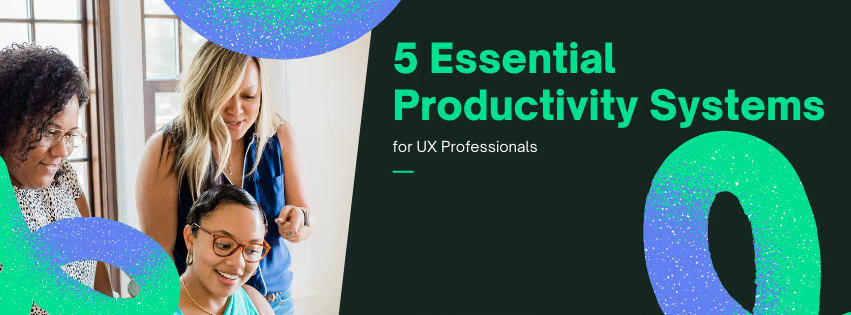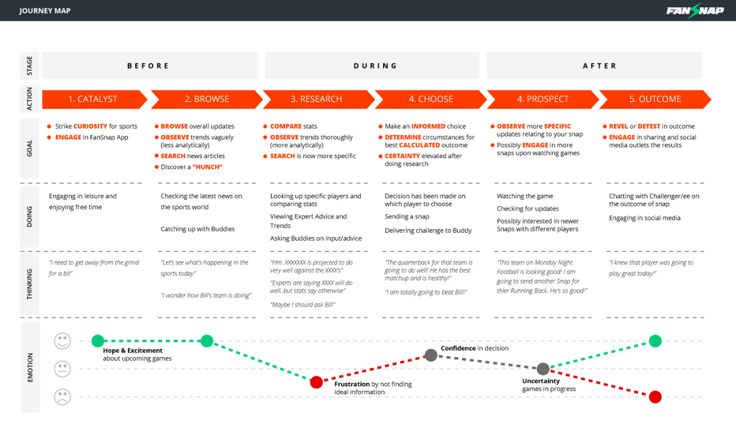As a UX designer, manager, or director, you’re tasked with …
harmonizing user needs, business goals, and technical constraints—all while fostering creativity and collaboration.
Managing this complexity requires not just talent, but effective productivity systems tailored to your unique challenges. Here’s an in-depth look at how you can elevate your productivity and deliver outstanding user experiences.
Eisenhower Matrix for UX Prioritization
- Urgent and Important (Do First): Address critical usability issues impacting user experience immediately. For example, if user testing reveals a major navigation flaw causing user drop-off, this becomes a top priority.
- Important but Not Urgent (Schedule): Plan tasks like updating design guidelines or exploring new UX trends. Schedule time for these activities to ensure long-term growth without interfering with immediate project demands.
- Urgent but Not Important (Delegate): Assign tasks such as compiling user feedback or preparing presentation slides to team members or assistants. This frees up your time for higher-impact work.
- Neither Urgent nor Important (Eliminate): Cut out unnecessary meetings or redundant documentation that doesn’t add value to your projects.
Tips:
- Regularly reassess your task list as project priorities shift.
- Use digital tools like Trello or Asana to categorize tasks within the matrix.
Pomodoro Technique for Creative Focus
- Structured Creativity: Allocate 25-minute blocks for specific design tasks, such as sketching wireframes or conducting heuristic evaluations. This creates a sense of urgency that can boost creativity.
- Mindful Breaks: Use 5-minute breaks to step away from screens, reducing eye strain and mental fatigue. Consider quick activities like stretching or a brief walk to refresh your mind.
- Team Implementation: Encourage your team to adopt Pomodoro sessions during collaborative work to maintain focus during brainstorming or critique sessions.
Tips:
- Customize session lengths to fit your workflow; some designers prefer longer focus periods.
- Use apps like Focus@Will or TomatoTimers to keep track of sessions.
Getting Things Done (GTD) for Managing UX Tasks
- Capture Everything: Keep a notebook or digital app handy to jot down ideas, feedback, or tasks as they arise during meetings or user sessions.
- Clarify and Organize: Break down projects into actionable tasks. For instance, “Improve onboarding flow” becomes “Analyze user drop-off rates,” “Sketch new onboarding screens,” and “Conduct A/B testing.”
- Review Regularly: Set aside time weekly to review your task lists, progress, and upcoming deadlines to adjust priorities accordingly.
Tips:
- Use tools like Evernote or OmniFocus designed around the GTD methodology.
- Create context-specific lists (e.g., “Design Tasks,” “User Research,” “Stakeholder Follow-ups”) to streamline task management.
Kanban for Visualizing UX Workflows
- Visual Boards: Set up a Kanban board with columns like “Backlog,” “In Progress,” “In Review,” and “Completed” to track design tasks, user research activities, and testing phases.
- Limit Work-in-Progress (WIP): Restrict the number of tasks in the “In Progress” column to prevent overcommitting and ensure quality focus on each task.
- Team Collaboration: Make the Kanban board accessible to all team members for transparency. This fosters accountability and helps team members understand each other’s workloads.
Tips:
- Incorporate digital Kanban tools like Jira or Monday.com for remote teams.
- Use color-coded cards or tags to signify different projects or priorities.
SMART Goals for UX Deliverables
- Specific: Define clear objectives like “Reduce checkout process steps from 5 to 3.”
- Measurable: Set quantifiable metrics such as “Increase user engagement by 20% in the next quarter.”
- Achievable: Ensure goals are realistic given resources and time. For example, “Conduct 15 user interviews in two weeks” is attainable with proper planning.
- Relevant: Align goals with business objectives, like “Improve mobile app usability to boost mobile sales.”
- Time-bound: Set deadlines, e.g., “Complete usability testing by the end of the month.”
Tips:
- Document goals and share them with stakeholders for alignment.
- Regularly track progress and adjust goals as needed based on feedback and changing priorities.
Bringing It All Together
By integrating these productivity systems into your daily routine, you can effectively manage the multifaceted demands of UX work. Prioritize tasks that deliver the most value, maintain creative focus, organize your responsibilities, visualize your team’s workflow, and set clear, impactful goals.
Action Steps:
- Start Small: Pick one system to implement this week and observe its impact on your productivity.
- Customize: Adapt these systems to fit your personal workflow and team dynamics.
- Share and Collaborate: Encourage your team to adopt these methods for collective efficiency gains.
Your Turn
What productivity challenges do you face in your UX role, and which of these systems are you excited to try?


